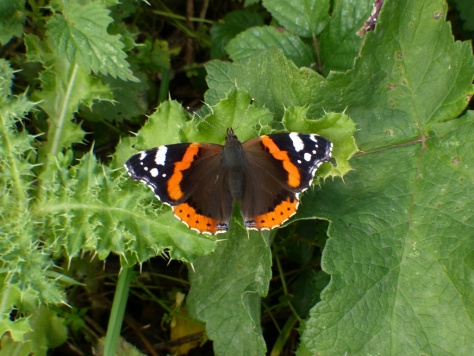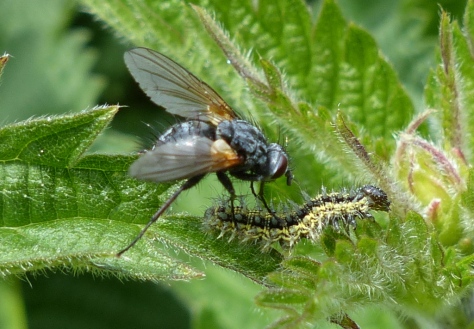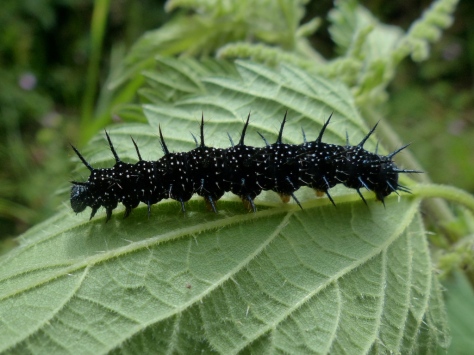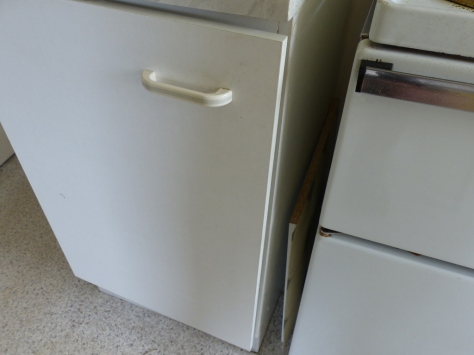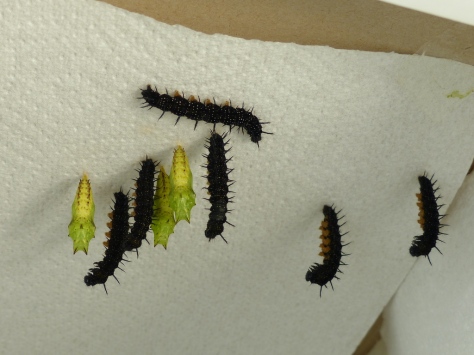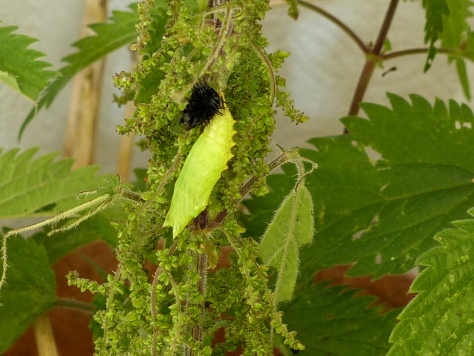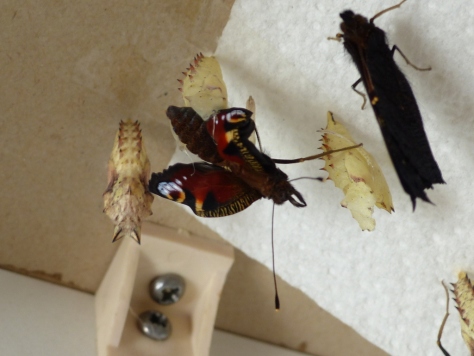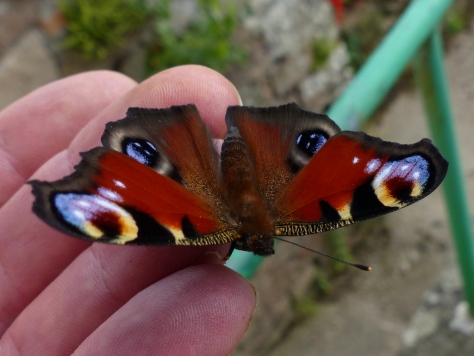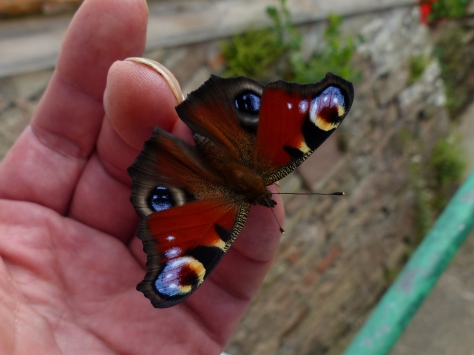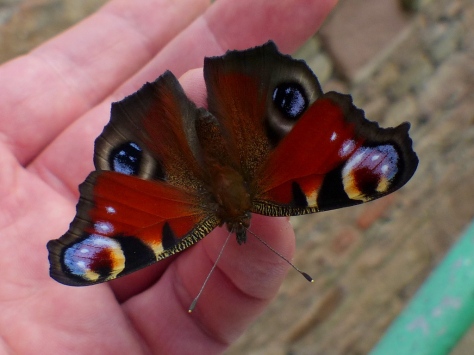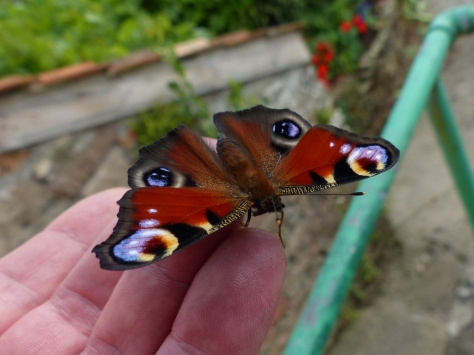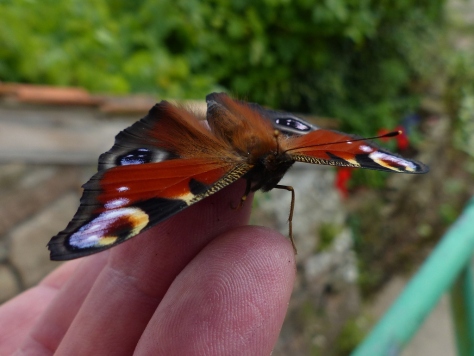Butterflies are not just for looking at 🙂
This is a post for the friends that I have made in the last few months, friends who have never seen this blog in the summertime.
Winter is so difficult for nature bloggers, it’s a wonder that we post anything. There is a different world coming and it is beautiful.
Butterflies have been big in my world this weekend. On Saturday I discovered a beautiful Small Tortoiseshell overwintering in my flat.
Sunday was a beautiful sunny day here and while I was out a Comma flew in front of me.
This isn’t the one that I saw yesterday, that was over a hedge and lost in a field almost as soon as I saw it. This is just a picture of another Comma.
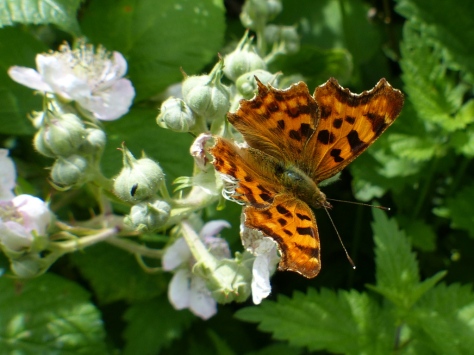 It is still much too early for Butterflies, there are no nectar plants about yet but it is okay they will just go back to sleep for a bit.
It is still much too early for Butterflies, there are no nectar plants about yet but it is okay they will just go back to sleep for a bit.
The Butterflies will be here in four weeks. It isn’t very long to wait.
It is not very unusual to see Butterflies here in the winter. Whilst many species overwinter as Caterpillars or as a Chrysalis we have five local species that overwinter as adult butterflies and they can wake up and have a little fly around on any warm winters day.
The other three are: The Red Admiral.
So what can you do with Butterflies besides look at them?
You can abduct them and raise them as your own 🙂
The Small Tortoiseshell is probably the first one that you will find.
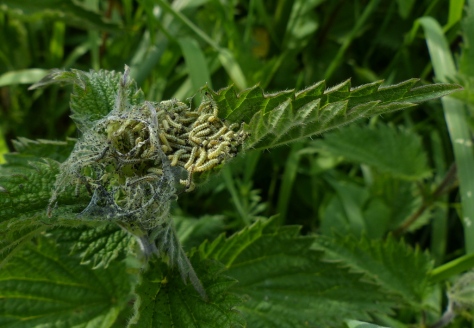 These are little yellow caterpillars that live in colonies on Stinging Nettles. If you want to try raising Butterflies in a different part of the world, pick a species that has an easy to obtain food plant, they eat a lot.
These are little yellow caterpillars that live in colonies on Stinging Nettles. If you want to try raising Butterflies in a different part of the world, pick a species that has an easy to obtain food plant, they eat a lot.
I made some mistakes when raising these and so I shall share the wisdom gained.
I chose large caterpillars, thinking that they would be quicker to raise than little ones. Most of my Caterpillars died and it wasn’t that much fun.
They died because they had already been attacked before I found them. In the wild there are a lot of insects that lay their eggs in Caterpillars and the larva grow inside and eat the Caterpillar.
This is a Tachinid fly injecting it’s eggs into a Small Tortoiseshell Caterpillar.
Pelatachina tibialis, Nasty little beast.
 So I did successfully raise Small Tortoiseshells but it wasn’t as much fun as I had hoped. Lesson Learnt, I went out to collect some Peacock Larvae.
So I did successfully raise Small Tortoiseshells but it wasn’t as much fun as I had hoped. Lesson Learnt, I went out to collect some Peacock Larvae.
Take the smallest ones that you can find, the less time they have been in the wild the less chance that they will have been got at.
Peacocks are the little black ones that also live on Stinging Nettles.
 I only took a few, I thought, it turned out that I had about forty in my little jar and from those I released thirty three Butterflies, many more than would have made it if I had left them in the wild.
I only took a few, I thought, it turned out that I had about forty in my little jar and from those I released thirty three Butterflies, many more than would have made it if I had left them in the wild.
 Now you can buy Butterfly raising kits. I don’t really like these. The most common species is the Painted Lady and this is because the Painted Lady can eat artificial food. So you generally get five little Caterpillars in a jar and the bottom of the jar is smeared with artificial food, there is a piece of paper under the lid for them to attach themselves to and the jar is otherwise empty.
Now you can buy Butterfly raising kits. I don’t really like these. The most common species is the Painted Lady and this is because the Painted Lady can eat artificial food. So you generally get five little Caterpillars in a jar and the bottom of the jar is smeared with artificial food, there is a piece of paper under the lid for them to attach themselves to and the jar is otherwise empty.
This is a horrible way to raise Caterpillars, in an empty jar. It deprives them of their youth. I am going to show you that Caterpillars are lively, intelligent animals. They have a social structure and they get great joy from swinging about in the jungle that is their home.
This is how I am going to do it.
Make them a home.
 The tray of mud is because the nettles will need water but I can’t put them in water or the Caterpillars will drown themselves.
The tray of mud is because the nettles will need water but I can’t put them in water or the Caterpillars will drown themselves.
 That is it. You don’t really have to worry about the Caterpillars escaping, they will stay on the food plant so long as you keep them provided with fresh greens.
That is it. You don’t really have to worry about the Caterpillars escaping, they will stay on the food plant so long as you keep them provided with fresh greens.
I admit, I came down one morning and found this.
 What on earth is going on here?
What on earth is going on here?
We are going to join the circus.
You bloomin’ well are not!
They had plenty of leaves they just weren’t fresh enough for them. You do have to keep on top of them.
Most of the time they like to hang together.
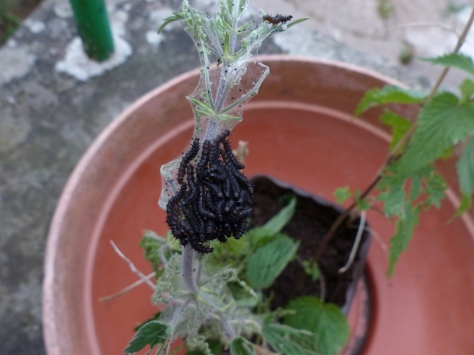 Although you do get the odd little one that has a mind of it’s own.
Although you do get the odd little one that has a mind of it’s own.
 They grow very quickly and they moult their skin four times. Each time that they moult there is a bigger and more beautiful Caterpillar inside.
They grow very quickly and they moult their skin four times. Each time that they moult there is a bigger and more beautiful Caterpillar inside.
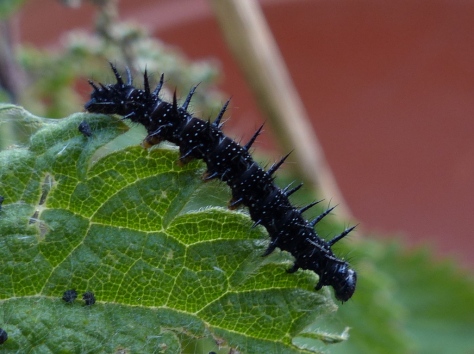 Those are not dead baby Caterpillars in the next picture, they are just the discarded skins. The little black spots are called frasse and they are Caterpillar poo. They eat a lot, so guess what else they do a lot 🙂
Those are not dead baby Caterpillars in the next picture, they are just the discarded skins. The little black spots are called frasse and they are Caterpillar poo. They eat a lot, so guess what else they do a lot 🙂
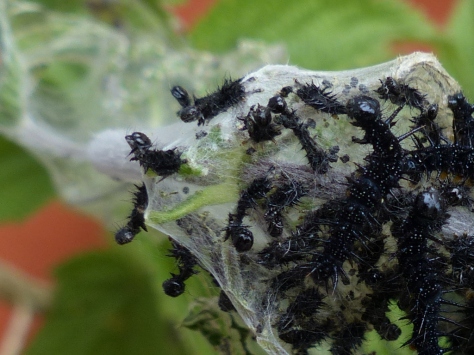 You need to clean them out regularly as well as change their leaves.
You need to clean them out regularly as well as change their leaves.
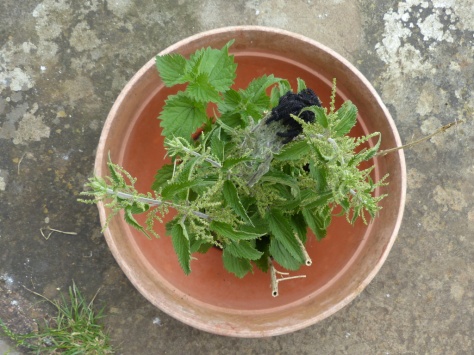 It won’t be long before you want to take these beautiful animals out for a photo shoot.
It won’t be long before you want to take these beautiful animals out for a photo shoot.
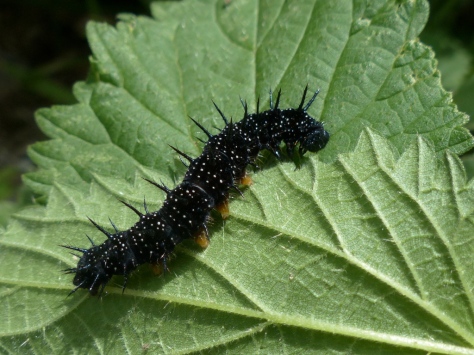 Now things are about to get interesting and we have a problem.
Now things are about to get interesting and we have a problem.
When they are in their final moult they will decide to leave the food plant. They are going to shed their skin one more time but this time there will be a chrysalis inside and so now they have done eating and they need to spread out.
My solution was to put them in my kitchen cupboard. (This might be a problem if you live with a partner)
 My clever little animals knew what was expected of them and they hung themselves all around their new home.
My clever little animals knew what was expected of them and they hung themselves all around their new home.
Watch the Caterpillar shed it’s skin one last time. I have speeded this up X4 because the whole process took six minutes.
The Caterpillars now make themselves a little sticky pad of silk to hang from and the most critical moment of this final moult is the very last bit when the chrysalis must abandon it’s old skin and attach itself to the silk pad. That is what all the twisting at the end of this video is about.
What happens now is a miracle. The Caterpillar will completely dissolve inside it’s chrysalis, only a few cells remain and from these cells a Butterfly grows. Something really wonderful.
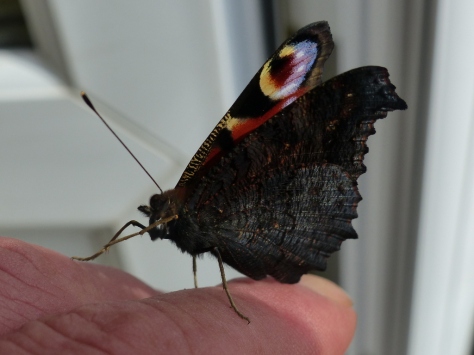 This next video is speeded up x2.
This next video is speeded up x2.
Now I just have to show you how to pick up a Butterfly and then we can let them go.
Never touch it’s wings. They are covered with very fine scales that will be displaced if you try to pick it up that way, the Butterfly needs these scales, they are not just for shimmering colour.
Put your hand in front of the Butterfly and invite it to step on.
 So long as you are known to the Butterflies this works every time.
So long as you are known to the Butterflies this works every time.
If the Butterflies don’t know who you are then try rescuing a Butterfly Princess from the long grass, this will earn you a reputation as a friend of the Butterflies and then it will be easy.
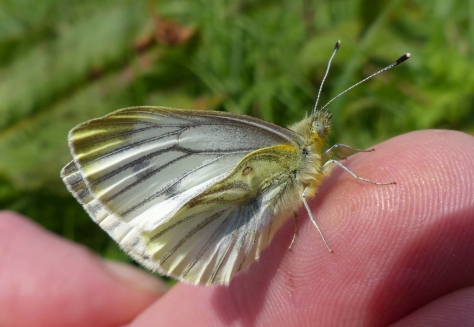 Now it is time to say goodbye.
Now it is time to say goodbye.
 Today the sun is shining and it feels like April. Fizz and I are going to look for Butterflies.
Today the sun is shining and it feels like April. Fizz and I are going to look for Butterflies.


